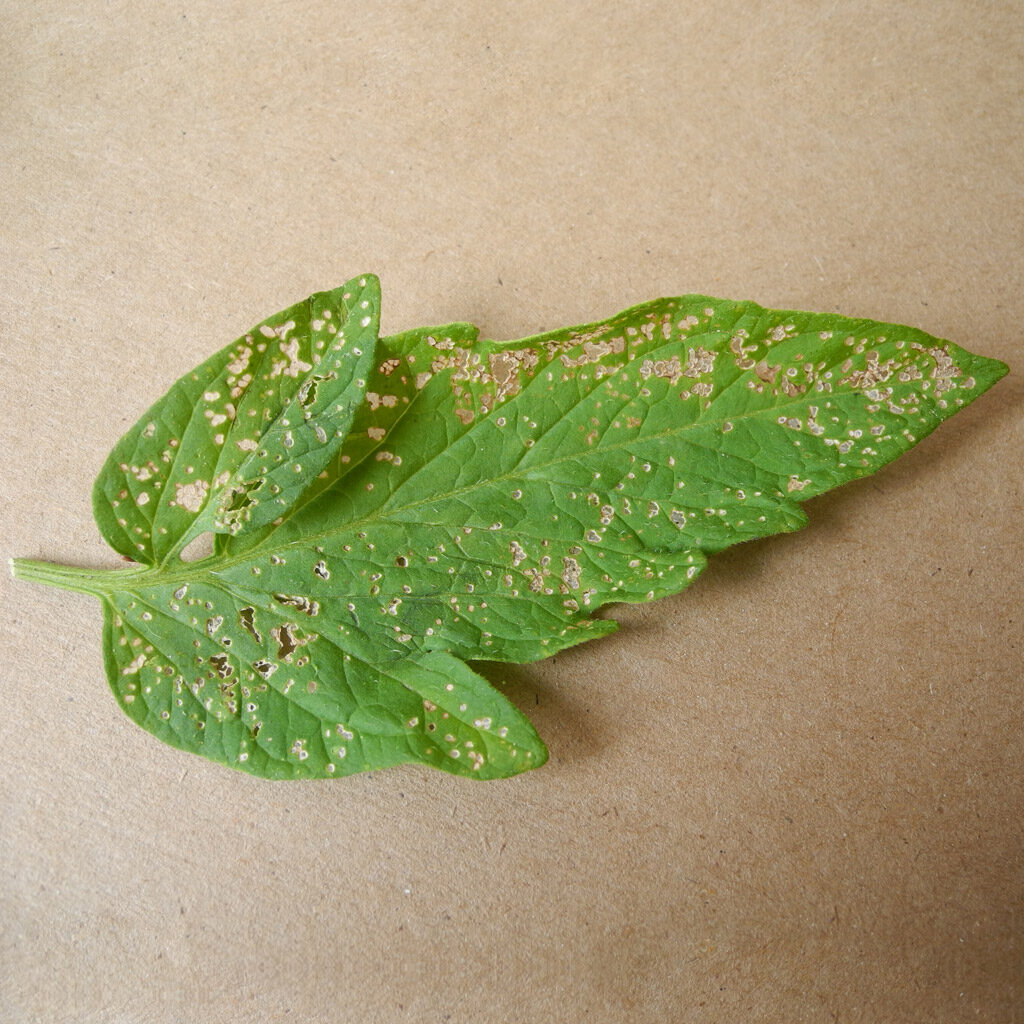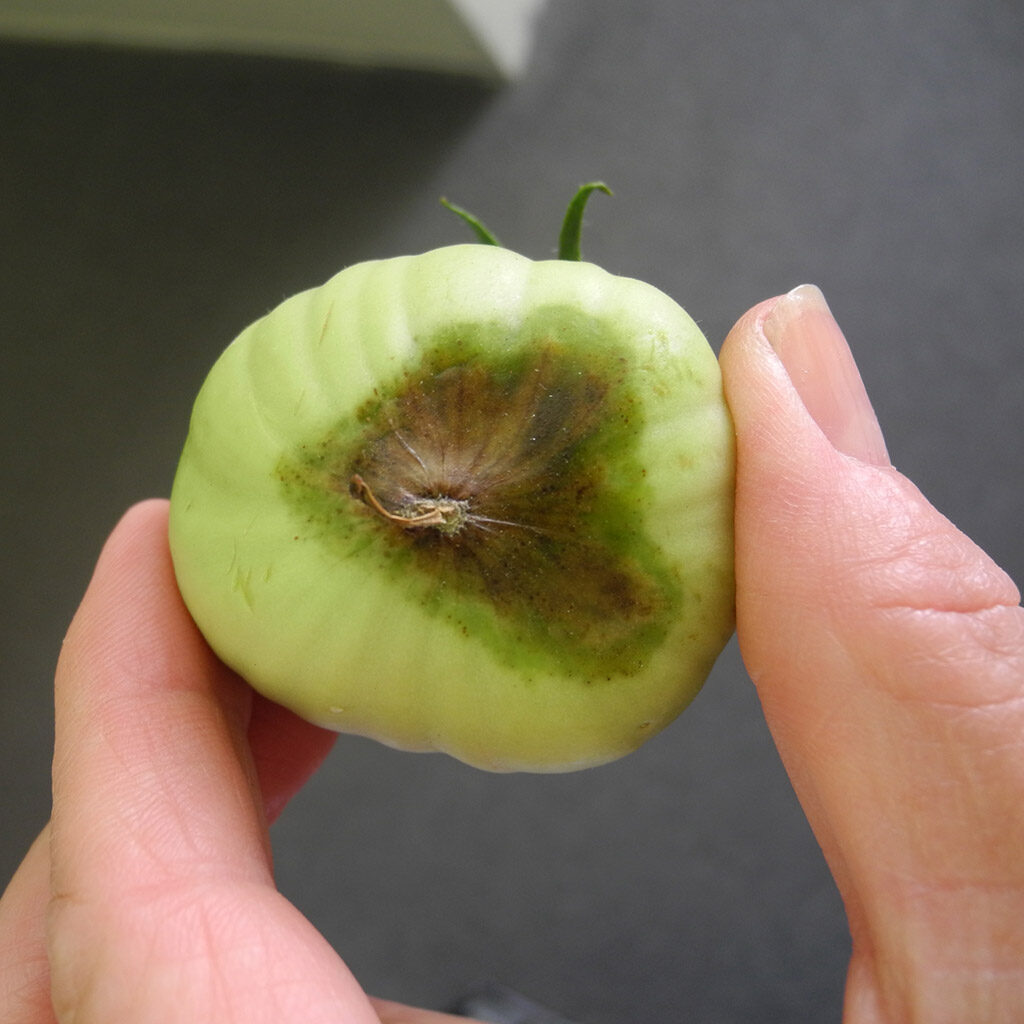Just when you’re dreaming about all those beautiful green tomatoes ripening on the vine… problems begin to appear in the veggie garden. Whether first timers or seasoned gardeners, we all know that insect, disease and other problems can appear.
Here’s a snapshot of what we’re seeing and possible solutions.

Flea beetles are tiny black beetles that feed on the leaves of vegetable plants. They can do considerable damage during the summer months—lots of small holes that can cause the leaves to turn brown, wilt or die. Tomato, pepper and eggplant are favorites!
Don’t be confused by the name; they are beetles—not fleas, though they hop like fleas as they move from leaf to leaf. During the growing season, chemical or organic sprays can be used. Read and follow label directions! A word to the wise—flea beetles can overwinter in garden debris, so do a thorough clean-up every fall.

Blossom end rot is caused by insufficient calcium uptake when young tomatoes are forming. The first symptom is a slightly water-soaked area near the blossom end of the fruit. The area turns darker and enlarges, sometimes covering half the tomato. Fruit that is not badly affected may still be eaten—just cut out the spot.
So what causes BER? It’s a calcium deficiency that can be tied to soil pH. The pH of your garden soil should be slightly acidic—6.2-6.7. So before you plant next spring, have your soil tested. H2O issues affect BER too. Heavy rain, drought (too dry), or poor watering habits (too wet) that cause wide fluctuations in soil moisture can interfere with calcium uptake. Water wisely and consider mulching the garden to conserve needed soil moisture. When you fertilize, don’t over-do it—especially with nitrogen! Read and follow label directions for whatever fertilizer you use (make sure that it contains calcium); more is not better.
Sadly, blossom end rot can affect zucchini, squash, pepper, eggplant and others.

Early Blight is a common fungal disease found on tomatoes, affecting the leaves, stems and fruits. Typically, brown spots are first noticed on the lower leaves. As the problem worsens, it affects more leaves, the stems, and then fruits.
So what can you do to keep EB out of your tomato patch? Avoid overhead watering if possible to reduce the splashing of the fungus. Mulch the garden with several inches of organic mulch to retain needed soil moisture. Stake plants to allow for better air circulation so leaves can dry (EB favors wet, humid conditions). Consider rotating where you plant your tomatoes (not always possible in small gardens). Fertilize to keep plants healthy, but don’t overdo it! Buy resistant varieties next year. Practice good sanitation—throw out (don’t compost) affected plants at the end of the season. Fungicides can be used as long as they are labeled to control EB; read and follow label directions.
Veggie gardening is rewarding, but it can be challenging; and it’s not been a “normal” gardening season. Best advice—don’t throw in the trowel just yet. There’s still plenty of time to enjoy your harvest.
